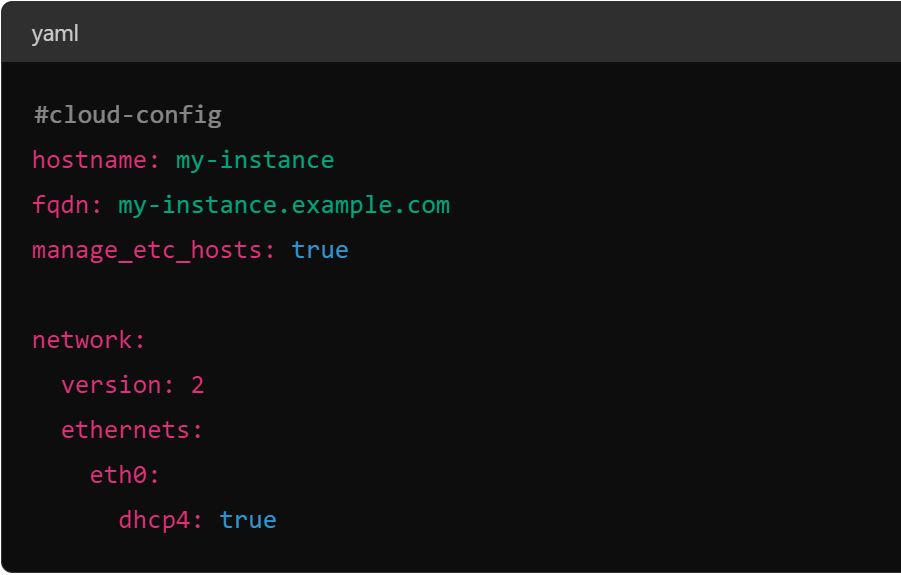Leveraging Cloud-Init for Configuring OpenStack Instances
OpenStack, a leading open-source cloud computing platform, allows for the provisioning and management of cloud infrastructure. One of the critical components in this ecosystem is cloud-init, a powerful tool used to initialize and configure cloud instances. Cloud-init enables automation of tasks such as installing packages, running scripts, and configuring instances at the first boot, thereby streamlining the deployment process. This article delves into how OpenStack utilizes cloud-init to optimize instance management.
Understanding Cloud-Init
Cloud-init is a versatile tool designed for cloud instance initialization. When an instance is launched, cloud-init reads metadata provided by the cloud platform to perform a series of initialization tasks. These tasks can range from setting up user accounts to installing software packages and configuring network settings. The flexibility of cloud-init makes it an essential tool for managing cloud infrastructure efficiently.
Installing Packages
One of the primary uses of cloud-init is to install necessary packages on a new instance. This ensures that the instance is ready for use with all required software components already installed. The process involves specifying the packages to be installed in a cloud-init configuration file.
Here’s an example of a cloud-init configuration that installs Apache and MySQL:

When this configuration is included in the instance’s metadata, cloud-init will automatically install Apache and MySQL during the first boot. This eliminates the need for manual installation and ensures consistency across instances.
Running Scripts
In addition to installing packages, cloud-init can execute scripts to perform custom tasks. This is particularly useful for complex configurations or initializing applications. Scripts can be written in various languages, including shell, Python, and Perl.
Here’s an example of a cloud-init configuration that runs a shell script:

In this example, cloud-init writes a simple "Hello, World!" message to the Apache web server’s default page and then restarts the Apache service. This demonstrates how cloud-init can be used to automate routine tasks, ensuring that instances are configured correctly and consistently.
Configuring Instances on First Boot
Configuring instances at the first boot is another vital function of cloud-init. This can include setting hostnames, configuring network interfaces, and managing user accounts. These configurations ensure that the instance integrates seamlessly into the existing infrastructure.
Here’s an example of a cloud-init configuration that sets the hostname and configures a network interface:

This configuration sets the instance’s hostname to "my-instance" and configures the network interface eth0 to use DHCP for obtaining an IP address. Such configurations are critical for ensuring that the instance operates correctly within the network environment.
Advantages of Using Cloud-Init in OpenStack
-
Consistency: Cloud-init ensures that all instances are configured consistently, reducing the likelihood of configuration errors.
-
Automation: Automating routine tasks saves time and effort, allowing administrators to focus on more strategic tasks.
-
Scalability: Cloud-init supports scalable infrastructure by automating the configuration process, making it easier to deploy and manage a large number of instances.
-
Flexibility: The ability to run custom scripts and install packages makes cloud-init a highly flexible tool, capable of handling diverse configuration requirements.
Conclusion
Cloud-init is an indispensable tool for managing OpenStack instances. By automating tasks such as installing packages, running scripts, and configuring instances at the first boot, cloud-init streamlines the deployment process and ensures that instances are ready for use immediately. This automation not only saves time and effort but also enhances the reliability and consistency of the cloud infrastructure. For any organization leveraging OpenStack, utilizing cloud-init is essential for optimizing instance management and achieving operational efficiency.
Read Also: OPENSTACK USE IN HYPER CONVERGED INFRASTRUCTURE ENVIRONMENT
Read Also: MANAGING A CLOUD ENVIRONMENT IN OPENSTACK

